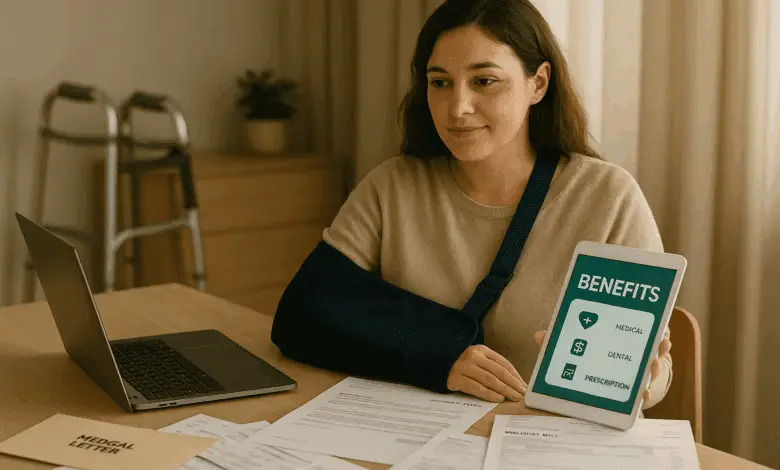Life After a Crash: How Disabled People in the US Get Help and Rebuild

A car crash can change everything in an instant. One moment, you’re heading to work or the shops. Next, you’re in the hospital, facing injuries that could affect you for months… or for life. When a crash results in disability and long-term health and access needs, society often makes things harder.
There’s the pain. There’s the paperwork. There’s the worry about work, bills and your future. But there is help available. And with the right support, it’s possible to rebuild your life.
Where to Start When You’re Feeling Lost
After a crash, it’s normal to feel overwhelmed. You may be dealing with doctors, physical therapy, insurance claims and letters you don’t understand. It’s a lot for anyone, especially if you’re also adapting to environments that may no longer be accessible or inclusive.
This is where tools like Mighty come in. Mighty is a platform that brings legal support, funding tools and useful guides all into one place. You can:
- Upload your medical records
- Get reminders about paperwork deadlines
- Track expenses for your claim
- Find lawyers who understand disability law
Instead of juggling piles of paper and confusing emails, Mighty gives you a clear path. For many disabled people, this makes a tough process feel more manageable.
What Help Is Available?
If a car crash causes a disability, there are two main types of support to think about:
1. Government Benefits
These help with living costs, medical bills and daily needs.
You may qualify for:
- Social Security Disability Insurance (SSDI) – if you’ve worked and paid into Social Security
- Supplemental Security Income (SSI) – if you have limited income and savings
- Medicare or Medicaid – depending on your income and SSDI status
- State vocational rehab programs – for training, job support, or returning to work
2. Personal Injury Compensation
If someone else caused the crash (through negligence, speeding, or distraction), you may have a case. A personal injury claim could cover:
- Current and future medical costs
- Lost income if you can’t return to work
- Pain and suffering
- Changes to your home or car (like wheelchair ramps or hand controls)
Paperwork Tips: Start Early, Stay Organized
It’s tempting to wait until you feel better before dealing with documents. But acting early makes a huge difference.
Right off the bat, you should gather your medical records, test results, receipts, mileage logs and anything else that could help your case. You don’t need to do this all at once. Start small. Write down what you’ve spent. Save every letter. Keep everything in a folder (digital or paper).
If you use a platform like Mighty, you can upload these as you go. That way, nothing gets lost and your legal team has what they need when they need it.
Real Life: Rosa’s Story
Rosa, a 42-year-old single mom from Texas, was hit by a distracted driver on her way to pick up her son. The crash left her with spinal injuries and no way to return to work as a cleaner. She was overwhelmed, unsure how she’d afford her rent, care, or basic needs.
A friend told her about Mighty. Through their platform, she connected with a lawyer who helped her file for SSDI and prepare a personal injury claim. Mighty also helped her track her therapy bills and medical visits.
While waiting for the final settlement, Rosa got an advance to buy a mobility scooter. Within a year, she had monthly SSDI payments, a safer home and enough money from her settlement to support her son and plan ahead.
Rosa’s story is one of many. With the right guidance and patience, many disabled people regain stability once systems start working for them.
Get the Right Medical Evidence
Doctors and nurses are focused on helping you feel better, but that’s not always enough for a claim.
Insurance companies and the Social Security office want to see proof of how your car accident disability affects your daily life.
Here’s how to get strong medical evidence:
- Ask for Functional Capacity Evaluations (FCEs) from your therapist
- Get detailed reports from your physical and occupational therapists
- Ask your doctor to include how long your symptoms are expected to last
- Follow up regularly to keep records up to date
Label these documents clearly and store them in folders. If you’re using Mighty, you can scan and upload them so everything stays in one place.
What Happens After a Settlement?
Many people think the settlement is the finish line, but in truth, it’s the starting point for the next chapter of your life.
A settlement gives you financial breathing room. But without a plan, the money can go quickly.
Here’s what to do next:
- Make a monthly budget to track spending
- Consider setting up a Special Needs Trust if you get SSI or Medicaid. This protects your benefits.
- Work with a financial advisor who understands disability
- Think long-term: plan for future medical needs, care costs, or tech upgrades
According to the Social Security Administration, more than 8 million Americans receive SSDI. Many also manage injury settlements at the same time. With smart planning, it’s possible to live securely and independently.
Turning the Page After Crisis
Life after a crash can be complex, especially in systems not built with accessibility in mind. But this isn’t the end—just a shift in how you move forward.
With support and advice from professionals. With your own courage and record-keeping. You can create a plan that works.
Take it one step at a time. Ask questions. Get help when you need it. Everyone deserves access to a life that supports their choices and independence.